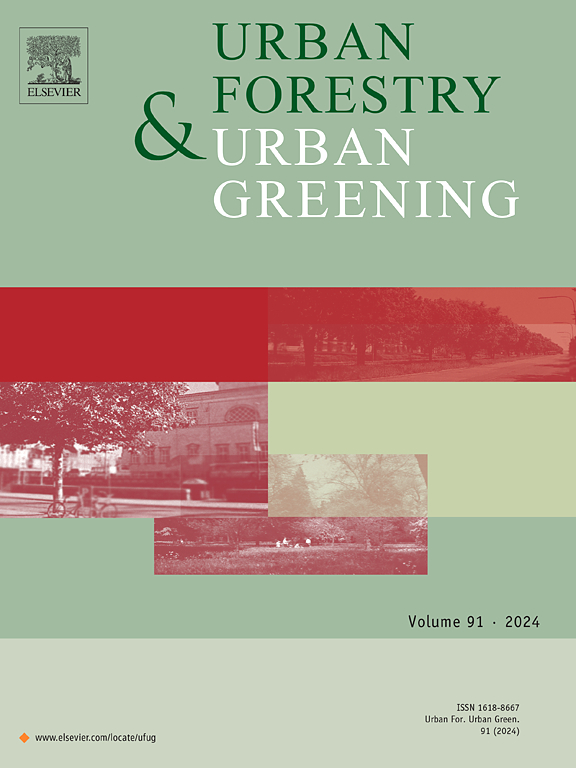Legacies of past housing discrimination in the present-day urban forest of a moderate-sized US city
IF 6
2区 环境科学与生态学
Q1 ENVIRONMENTAL STUDIES
引用次数: 0
Abstract
Street trees are known to provide a variety of services to the public. Understanding the makeup of the street tree community, and therefore the extent of those services, requires a consideration of past policies that contributed to the patterns we see today. Inequities in environmental conditions in US cities, including access to street trees, has been shown to be a product of race-based federal policies such as the Federal Home Owners’ Loan Corporation (HOLC), which graded communities in the 1930’s according to perceived levels of risk for mortgage lending. We used a 2021 tree inventory to examine whether a legacy of HOLC designations is still observable in the modern urban forest of Schenectady, NY (USA) by comparing the size, number, and diversity of trees within various HOLC grades. The lower-graded areas, C and D, had about half the number of trees as the higher-rated A- and B-graded areas. The trees in D-graded areas were also smaller and were the least taxonomically diverse. In recent years, however, tree plantings have disproportionately favored D-graded areas over A- and B-graded areas. Despite the progress, this study adds to the growing literature that the underprivileged neighborhoods, historically made up of people of color, are not receiving equivalent environmental benefits as wealthier areas. Identifying such patterns highlights the obligation to construct public policy approaches that target the inequities in urban forest conditions so that all residents benefit equally from the services that trees in urban environments provide.
求助全文
约1分钟内获得全文
求助全文
来源期刊

Urban Forestry & Urban Greening
FORESTRY-
CiteScore
11.70
自引率
12.50%
发文量
289
审稿时长
70 days
期刊介绍:
Urban Forestry and Urban Greening is a refereed, international journal aimed at presenting high-quality research with urban and peri-urban woody and non-woody vegetation and its use, planning, design, establishment and management as its main topics. Urban Forestry and Urban Greening concentrates on all tree-dominated (as joint together in the urban forest) as well as other green resources in and around urban areas, such as woodlands, public and private urban parks and gardens, urban nature areas, street tree and square plantations, botanical gardens and cemeteries.
The journal welcomes basic and applied research papers, as well as review papers and short communications. Contributions should focus on one or more of the following aspects:
-Form and functions of urban forests and other vegetation, including aspects of urban ecology.
-Policy-making, planning and design related to urban forests and other vegetation.
-Selection and establishment of tree resources and other vegetation for urban environments.
-Management of urban forests and other vegetation.
Original contributions of a high academic standard are invited from a wide range of disciplines and fields, including forestry, biology, horticulture, arboriculture, landscape ecology, pathology, soil science, hydrology, landscape architecture, landscape planning, urban planning and design, economics, sociology, environmental psychology, public health, and education.
 求助内容:
求助内容: 应助结果提醒方式:
应助结果提醒方式:


